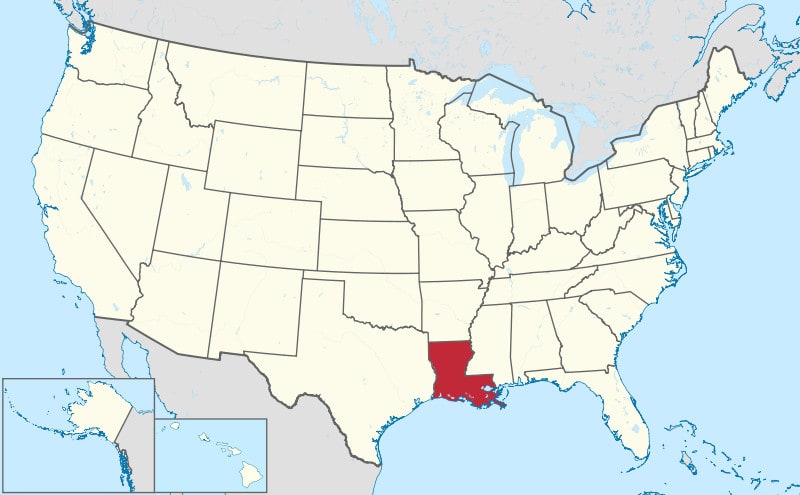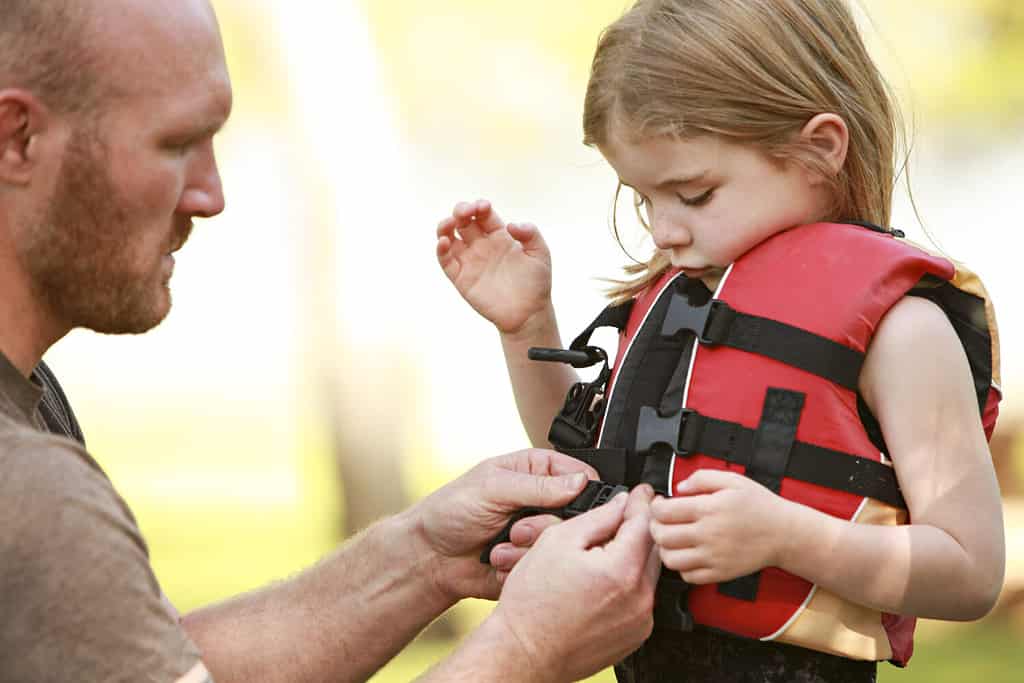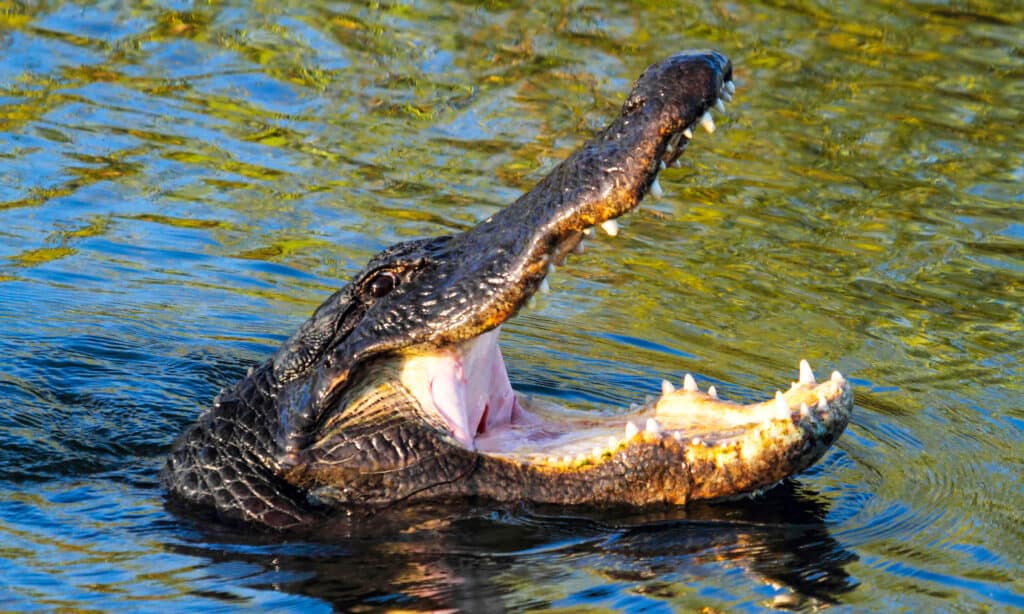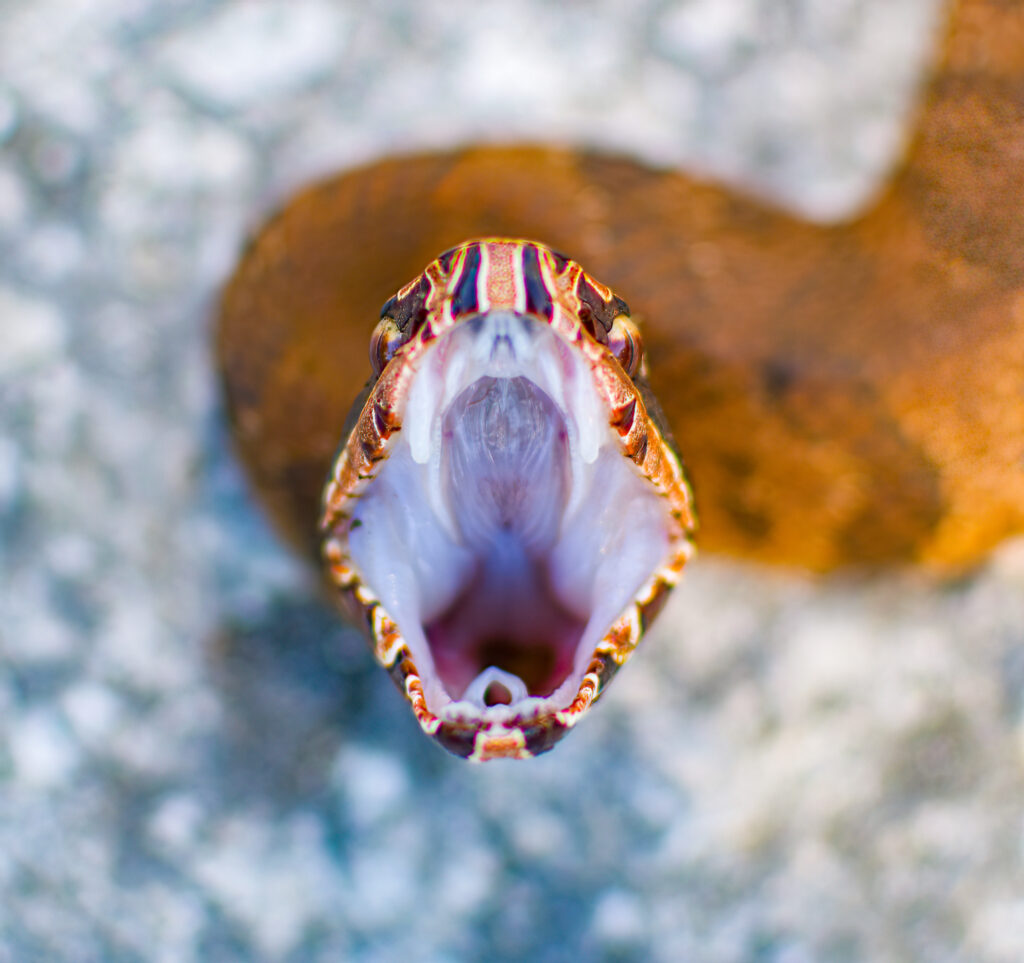There are many beautiful lakes, rivers, and beaches in Louisiana that can be a wonderful escape on a hot summer day. If you take a dip, however, should you be worried about your safety? This article will discuss how dangerous Louisiana lakes are based on various factors including drowning rates and wildlife presence. So, how dangerous are Louisiana lakes? Let’s find out.
Geography

©TUBS / CC BY-SA 3.0 – License
Louisiana, situated in the southeastern region of the United States, boasts a rich and diverse geography that sets it apart from other states. Its location along the Gulf of Mexico has a profound impact on its climate, culture, and economy. Louisiana shares its borders with several neighboring states, adding to its unique regional identity. To the west, it is flanked by Texas, while Arkansas lies to the north. To the east, Mississippi forms the boundary, and to the south is the Gulf of Mexico.
Lakes

The largest lake in Louisiana is Lake Ponchartrain.
©Vivian Shoultz/Shutterstock.com
One of the defining features of Louisiana’s geography is its extensive network of waterways. The state is known for its abundance of lakes, rivers, and swamps. Among these, Lake Pontchartrain stands out as one of the largest inland saltwater lakes in the United States. Covering over 600 square miles, it connects to the Gulf of Mexico via several passes and plays a crucial role in the region’s ecology and economy. The city of New Orleans, a cultural and economic hub, lies along the southern shore of this vast lake.
In the western part of the state, the Toledo Bend Reservoir straddles the border between Louisiana and Texas and is the largest human-made reservoir in the southern United States. Encompassing approximately 185,000 acres, it offers a haven for outdoor enthusiasts, with fishing, boating, and recreational opportunities. Meanwhile, Caddo Lake in the northwest corner of Louisiana is celebrated for its enchanting cypress trees adorned with Spanish moss. Covering around 26,800 acres, it holds the distinction of being a Ramsar Wetland of International Importance.
In addition to these remarkable bodies of water is Lake Maurepas. It is located between Lake Pontchartrain and the Mississippi River and spans roughly 118,000 acres. This brackish lake plays a crucial role in the Pontchartrain Basin’s ecosystem and flood control efforts. Louisiana’s lakes, rivers, and swamps contribute to its natural beauty and help shape its history, culture, and way of life. These waterways have provided sustenance, transportation, and recreation for generations of Louisianans.
Drownings
By the Numbers

It is always a good idea for young kids to wear life jackets when they are swimming in lakes and other bodies of water.
©Collin Quinn Lomax/Shutterstock.com
For American kids between the ages of one and four years old, drowning is the most likely cause of death. There are more than 4,000 fatal drownings every year in the U.S., and Louisiana is one of the most dangerous states. Per every 100,000 deaths in Louisiana, 2.31 are drownings. This is the fourth highest rate of any state, trailing Alaska (4.4 drownings per 100,000 deaths), Hawaii (3.34 drownings per 100,000 deaths), and Montana (2.32 drownings per 100,000 deaths). Unsurprisingly, more unintentional drowning deaths in the U.S. occur in July than in any other month.
Emergency Response
Drownings in the United States are a tragically common occurrence, claiming thousands of lives each year. They occur in a variety of settings, including swimming pools, lakes, rivers, and even bathtubs, making them a significant public health concern. Several agencies and organizations play crucial roles in responding to drowning emergencies and promoting water safety.

The United States Coast Guard often responds to drowning emergencies.
©Leonard Zhukovsky/Shutterstock.com
One of the primary agencies that responds to drowning emergencies is the local fire department or emergency medical services (EMS). They are often the first on the scene to provide life-saving measures and initiate search and rescue operations. Additionally, the United States Coast Guard plays a pivotal role in water-related emergencies, especially in coastal areas and on large bodies of water. The Coast Guard played a tremendous role during rescue efforts following Hurricane Katrina in New Orleans, Louisiana, for example.
Associated Injuries
Common associated injuries and causes of death in drowning incidents include respiratory distress, aspiration of water into the lungs, and in severe cases, cardiac arrest. Secondary injuries, such as head trauma or fractures, can also occur due to the struggle to stay afloat or in rescue attempts. Other contributing factors to drowning include lack of supervision, alcohol consumption, and inadequate swimming skills. To prevent these tragedies, organizations like the American Red Cross, the National Drowning Prevention Alliance, and the YMCA actively promote water safety education, swimming lessons, and lifeguard training to reduce the risk of drownings and promote safer aquatic environments.
Wildlife
Alligators

There are approximately 2 million alligators in Louisiana.
©iStock.com/Cindy Larson
Besides drowning, another potential concern while swimming in Louisiana is running into wildlife. How dangerous are the residents of Louisiana lakes? Luckily, the threat of injury or death due to a wildlife encounter is very low. Perhaps the most fearsome Louisiana resident is the American Alligator. Although they are intimidating creatures that should be treated with caution, there have only been two fatal attacks in Louisiana. One attack occurred on August 30, 2021, near Lake Pontchartrain. The other is poorly documented and supposedly occurred in the 1800s.
Nonlethal Alligator attacks in Louisiana, while not common, do occur because of the state’s abundant alligator population and proximity to their natural habitats. These incidents typically happen when humans and alligators come into close contact with each other near water bodies or marshy areas. Alligators, as opportunistic predators, may perceive humans or their pets as potential prey.

Alligators have large and powerful jaws that can inflict puncture wounds and major lacerations.
©Steve Byland/Shutterstock.com
Injuries resulting from alligator attacks can vary in severity. Most commonly, these reptiles inflict deep puncture wounds, lacerations, or crushing injuries with their powerful jaws. Victims may suffer from tissue damage, broken bones, and infections from alligator bites. While fatal alligator attacks are rare, they can be extremely dangerous, especially if the victim is unable to escape or receive immediate medical attention.
To minimize the risk of alligator encounters and attacks, residents and visitors must adhere to safety guidelines, such as avoiding swimming in areas known for alligator presence, refraining from feeding them, and maintaining a safe distance when observing these magnificent but potentially dangerous creatures in their natural habitats.
Other Animals

The copperhead is a venomous snake that inhabits the forested areas of Louisiana and other eastern and central states.
©Creeping Things/Shutterstock.com
The most dangerous Louisianians in nature are much smaller creatures, such as killer bees, brown recluse spiders, and various snake species. Many of these animals live near bodies of water, like lakes. For example, Louisiana is home to 47 native snake species, many of which are often near water and can swim. Some particularly dangerous species in the state are cottonmouths, eastern copperheads, and eastern diamondback rattlesnakes. Fortunately, there have been no lethal snake encounters in Louisiana in the past 25 years.
Nonlethal snake attacks in Louisiana are relatively rare, and most snake encounters with humans in the state involve non-venomous species. Venomous snakes typically avoid human contact when given the chance. When nonlethal snake bites occur, they typically result in minor injuries, such as puncture wounds or localized swelling and pain. Immediate medical attention is still advisable to prevent infection or complications.
Most Dangerous Lakes
Most Toxic
Devil’s Swamp Lake is a potentially dangerous lake in Louisiana due to toxicity. Sitting near the city of Baton Rouge, this lake is a part of the extensive wetlands and waterways that characterize the region. While it may sound ominous due to its name, the lake itself is not inherently “devilish.” Instead, it has faced environmental challenges over the years that have resulted in pollution and contamination.
The pollution in Devil’s Swamp Lake, like many bodies of water in the region, is primarily a result of human activities and industrialization. Louisiana’s industrial corridor, often referred to as “Cancer Alley,” stretches along the Mississippi River and includes Baton Rouge. This area hosts numerous petrochemical plants, refineries, and manufacturing facilities, all of which release various pollutants into the air and water.
The pollution in Devil’s Swamp Lake is primarily due to industrial discharges, runoff from agricultural areas, and urban development in its vicinity. These activities have introduced a range of contaminants into the lake, including heavy metals, industrial chemicals, and nutrients like nitrogen and phosphorus. These substances can lead to water quality issues, such as eutrophication, harmful algal blooms, and the degradation of aquatic ecosystems.
The contamination in Devil’s Swamp Lake has raised concerns for both the environment and public health. Elevated levels of toxins in the water can harm aquatic life, disrupt the food chain, and negatively impact the balance of the ecosystem. Additionally, the polluted water poses a risk to human health if used for recreational purposes or if the contaminants find their way into local drinking water supplies. Efforts to address the pollution in Devil’s Swamp Lake include monitoring water quality, implementing regulations to limit industrial discharges, and promoting sustainable land use practices to reduce runoff.
Most Snake Infested
Calcasieu Lake is a prominent landmark situated in the southwestern part of Louisiana. It is located within Calcasieu Parish and serves as a significant water resource in the region. The lake is particularly notable for its size and ecological importance, providing a variety of recreational opportunities and supporting diverse wildlife. Calcasieu Lake is also home to one of the most dangerous bridges in the country, the Calcasieu River Bridge.

The cottonmouth is a viper species that lives throughout the southeastern United States. With a fitting nickname, the water moccasin is an avid swimmer.
©iStock.com/Chase D’animulls
Regarding snake species inhabiting Calcasieu Lake, it’s essential to note that snakes are not aquatic creatures and are generally not found residing within the lake itself. Instead, snakes typically inhabit the surrounding wetlands, marshes, and terrestrial habitats. In the Louisiana wetlands near Calcasieu Lake, you may find various snake species such as the eastern cottonmouth, also known as the water moccasin, which is semi-aquatic and often found near water bodies.
Additionally, the region is home to other snake species like the Texas rat snake, eastern garter snake, and various non-venomous water snakes. These snakes play crucial roles in the local ecosystem, helping to control rodent populations and serving as a food source for birds of prey and other predators.
How Dangerous Are Louisiana Lakes?
All in all, Louisiana lakes are relatively safe so long as simple precautions are taken. Be sure to equip yourself with a personal floatation device (lifejackets) if you are not a proficient swimmer. Also, observe safe boating practices to avoid accidents such as collisions or drownings. If you see wildlife, give it plenty of space and avoid provoking it. Finally, make sure the water you are swimming in is safe and will not potentially expose you to toxic chemicals if you are near an industrial area.
The photo featured at the top of this post is © Mallory Fandal/Shutterstock.com
Thank you for reading! Have some feedback for us? Contact the AZ Animals editorial team.







